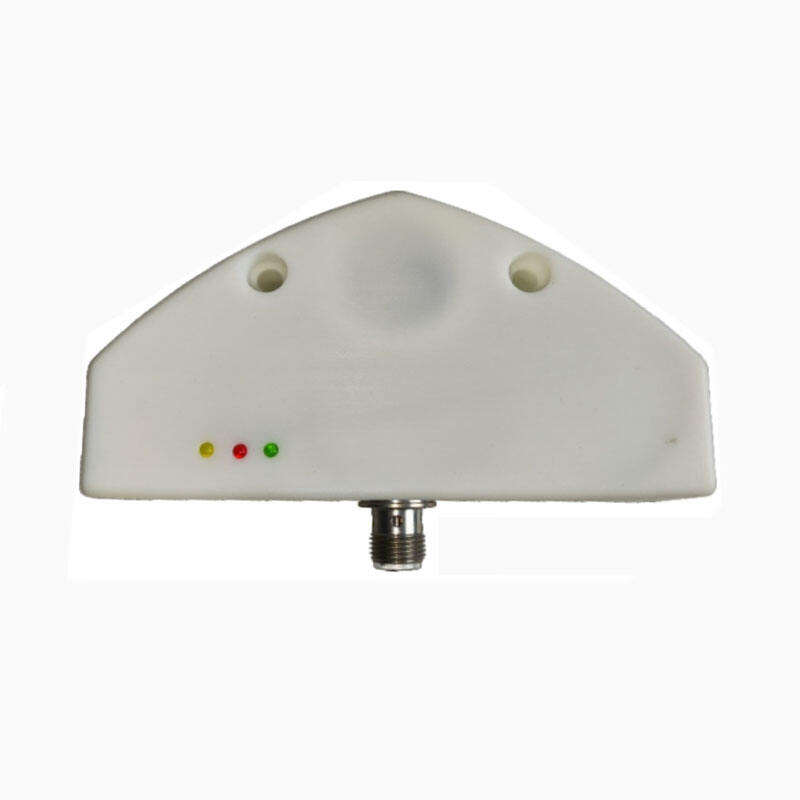Modern industrial automation and precision manufacturing rely heavily on accurate sensing technologies to maintain optimal performance levels. Among the various sensing solutions available today, optical sensors have emerged as critical components that significantly enhance device precision across numerous applications. These advanced sensing devices utilize light-based detection principles to provide reliable, fast, and highly accurate measurements that traditional mechanical sensors simply cannot match. The implementation of optical sensor technology has revolutionized how machines detect objects, measure distances, and monitor position changes with unprecedented accuracy levels.
The precision advantages of optical sensors extend beyond basic detection capabilities, offering sophisticated measurement solutions that enable complex automation processes. These devices can detect minute changes in position, identify material properties, and provide real-time feedback with exceptional repeatability. Industries ranging from automotive manufacturing to pharmaceutical production have adopted optical sensor technology to achieve tighter quality control standards and improve overall operational efficiency. The non-contact nature of optical sensing eliminates mechanical wear and provides consistent performance over extended operational periods.
Fundamental Principles of Optical Sensor Technology
Light-Based Detection Mechanisms
Optical sensors operate on the fundamental principle of light emission, transmission, and detection to identify the presence or absence of objects within their sensing range. The most common configuration involves an infrared LED light source paired with a photodiode detector that responds to changes in light intensity. When an object interrupts the light beam or reflects light back to the detector, the sensor generates an electrical signal proportional to the detected light level. This simple yet effective mechanism provides rapid response times measured in microseconds, making optical sensors ideal for high-speed applications requiring precise timing.
The wavelength selection plays a crucial role in optical sensor performance, with infrared light being preferred for most industrial applications due to its immunity to ambient lighting conditions. Visible red light sensors offer advantages in alignment and troubleshooting scenarios, while laser-based optical sensors provide the highest precision for critical measurement applications. The choice of light source directly impacts the sensor's detection range, resolution, and immunity to environmental interference factors.

Signal Processing and Output Characteristics
Modern optical sensors incorporate sophisticated signal processing circuits that convert detected light variations into stable digital or analog output signals. Advanced models feature automatic gain control, ambient light compensation, and digital filtering to maintain consistent performance across varying environmental conditions. The signal conditioning circuitry ensures that minor fluctuations in light intensity do not trigger false outputs, while maintaining sensitivity to legitimate detection events.
Output characteristics vary depending on the specific optical sensor design, with options including discrete switching outputs, analog voltage signals, and digital communication protocols. Switching outputs provide simple on/off detection capabilities, while analog outputs enable distance measurement and material property analysis. Communication-enabled sensors offer advanced diagnostic capabilities and integration flexibility within modern industrial control systems.
Precision Enhancement Mechanisms
High-Resolution Position Detection
The precision advantages of optical sensor technology become apparent in position detection applications where accuracy requirements exceed the capabilities of traditional sensing methods. Laser-based optical sensors can achieve sub-millimeter positioning accuracy through focused beam geometry and advanced signal processing algorithms. The narrow beam diameter allows for precise edge detection and small part identification that would be impossible with broader sensing fields.
Retroreflective optical sensors enhance precision through stable optical path configurations that maintain consistent performance despite minor mechanical variations in mounting positions. The use of specialized retroreflective targets ensures optimal light return characteristics and minimizes the effects of target surface irregularities on detection accuracy. This configuration proves particularly valuable in conveyor systems where precise part positioning is essential for downstream processing operations.
Temperature and Environmental Stability
Precision optical sensors incorporate temperature compensation mechanisms that maintain consistent performance across industrial operating temperature ranges typically spanning -25°C to +70°C. The LED light source output and photodiode sensitivity both exhibit temperature-dependent characteristics that require active compensation to preserve detection accuracy. Advanced optical sensor designs include thermally matched components and compensation circuitry that automatically adjusts operating parameters to counteract temperature-induced variations.
Environmental protection features such as IP67 or IP69K ratings ensure that optical sensor performance remains stable despite exposure to moisture, dust, and chemical contaminants commonly found in industrial environments. Sealed optical windows and robust housing materials prevent contamination from affecting the light path while maintaining long-term calibration stability. These protective measures are essential for maintaining precision in demanding applications such as food processing or outdoor installations.
Industrial Applications and Performance Benefits
Manufacturing Process Control
In modern manufacturing environments, optical sensors provide the precision control necessary for automated assembly processes, quality inspection systems, and material handling operations. The fast response times and high accuracy of optical sensing enable real-time process adjustments that maintain product quality standards while maximizing production throughput. Optical sensors can detect part presence, verify proper positioning, and identify defects with repeatability levels that ensure consistent product quality.
Assembly line applications benefit from the ability of optical sensors to detect small components, verify installation completeness, and trigger corrective actions when deviations occur. The non-contact sensing principle eliminates the risk of part damage during inspection while providing reliable detection across varying part sizes and materials. Integration with programmable logic controllers enables sophisticated control strategies that optimize production efficiency.
Quality Assurance and Inspection Systems
Quality control applications leverage the precision capabilities of optical sensors to perform dimensional measurements, detect surface defects, and verify component presence with accuracy levels that exceed manual inspection methods. Vision-based optical sensor systems can simultaneously measure multiple parameters and make pass/fail decisions within milliseconds, enabling 100% inspection rates without impacting production speed.
The implementation of optical sensor technology in quality assurance systems reduces human error, improves inspection consistency, and provides detailed documentation of inspection results for traceability purposes. Advanced optical sensors can detect subtle variations in color, texture, and dimensional characteristics that indicate quality issues before they impact final product performance. This proactive approach to quality control reduces waste and improves customer satisfaction.
Advanced Optical Sensor Technologies
Laser-Based Precision Sensing
Laser diode optical sensors represent the pinnacle of precision sensing technology, offering beam diameters as small as 0.5mm for detecting minute objects and achieving positioning accuracy in the micrometer range. The coherent light properties of laser sources enable superior beam quality and consistent performance across extended sensing distances. These characteristics make laser optical sensors ideal for applications requiring exceptional precision such as semiconductor manufacturing and medical device assembly.
The stability and longevity of laser optical sensor systems provide significant advantages in critical applications where sensor replacement or recalibration would disrupt production schedules. Modern laser diodes offer operational lifetimes exceeding 100,000 hours while maintaining consistent output characteristics throughout their service life. This reliability factor contributes directly to improved system precision by eliminating performance degradation over time.
Smart Sensor Integration and Connectivity
Contemporary optical sensor designs incorporate microprocessor-based intelligence that enables advanced features such as multi-point sensing, programmable detection windows, and self-diagnostic capabilities. These smart sensors can adapt their operating parameters automatically to optimize performance for specific applications while providing detailed status information to higher-level control systems.
Industrial Ethernet and fieldbus connectivity options allow optical sensors to integrate seamlessly into modern factory automation networks, providing real-time performance data and enabling remote configuration management. The ability to monitor sensor performance metrics and receive predictive maintenance alerts helps maintain optimal precision levels throughout the sensor's operational lifetime while minimizing unexpected downtime events.
Implementation Considerations for Maximum Precision
Proper Installation and Alignment Techniques
Achieving maximum precision from optical sensor installations requires careful attention to mounting alignment, environmental protection, and optical path optimization. Mechanical mounting systems should provide stable positioning while accommodating thermal expansion and vibration isolation requirements. The use of precision mounting brackets and alignment tools ensures that optical sensors maintain their calibrated positions throughout normal operational conditions.
Optical path considerations include minimizing ambient light interference, preventing contamination buildup on sensor windows, and ensuring adequate clearance for beam propagation. Regular cleaning schedules and protective covers help maintain optimal light transmission characteristics while preventing performance degradation from accumulated debris or chemical residues.
Calibration and Maintenance Protocols
Establishing comprehensive calibration procedures ensures that optical sensor systems maintain their specified precision levels throughout their operational lifetime. Calibration protocols should include verification of detection thresholds, response timing measurements, and accuracy validation using certified reference standards. Documentation of calibration results provides traceability and enables trending analysis to identify potential performance issues before they impact production quality.
Preventive maintenance schedules should address optical window cleaning, electrical connection inspection, and mechanical mounting verification to preserve sensor performance characteristics. Regular performance monitoring through built-in diagnostic features helps identify degradation trends and optimize maintenance timing to minimize production disruptions while ensuring continued precision operation.
FAQ
What factors affect optical sensor precision in industrial environments
Several environmental and operational factors can influence optical sensor precision, including temperature variations, ambient light conditions, air quality, and mechanical vibration. Temperature changes affect both LED output characteristics and photodiode sensitivity, requiring compensation circuits for stable operation. Ambient light interference can cause false triggering or reduced sensitivity, making proper shielding and wavelength selection critical for reliable performance. Dust, moisture, and chemical contamination on optical surfaces will degrade sensor accuracy over time, necessitating regular cleaning and maintenance procedures.
How do optical sensors compare to other sensing technologies for precision applications
Optical sensors typically offer superior precision compared to mechanical limit switches, inductive proximity sensors, and capacitive sensors in terms of positioning accuracy and repeatability. The non-contact sensing principle eliminates mechanical wear and provides consistent performance over millions of switching cycles. Response times are significantly faster than mechanical alternatives, enabling precise timing control in high-speed applications. However, optical sensors may require more careful environmental protection and are generally more sensitive to contamination than some alternative sensing technologies.
What maintenance requirements ensure long-term precision performance
Maintaining optical sensor precision requires regular cleaning of optical surfaces using appropriate solvents and lint-free materials to prevent contamination buildup. Periodic calibration verification using certified reference standards helps ensure continued accuracy throughout the sensor's operational lifetime. Mechanical mounting inspection should verify proper alignment and secure attachment to prevent position drift. Electrical connection checks and cable inspection prevent signal degradation that could affect precision measurements. Environmental protection systems such as air purging or protective enclosures may require periodic maintenance depending on application severity.
Can optical sensors maintain precision in high-temperature industrial environments
Modern industrial optical sensors are designed to maintain precision performance in high-temperature environments through several engineering approaches. Temperature compensation circuits automatically adjust LED drive current and detection thresholds to counteract thermal effects on component characteristics. Thermally stable materials and heat dissipation features prevent excessive temperature rise in electronic components. Many optical sensors are rated for continuous operation at temperatures up to 70°C, with specialized high-temperature models capable of functioning reliably at even higher temperatures while maintaining their specified precision characteristics.
Table of Contents
- Fundamental Principles of Optical Sensor Technology
- Precision Enhancement Mechanisms
- Industrial Applications and Performance Benefits
- Advanced Optical Sensor Technologies
- Implementation Considerations for Maximum Precision
-
FAQ
- What factors affect optical sensor precision in industrial environments
- How do optical sensors compare to other sensing technologies for precision applications
- What maintenance requirements ensure long-term precision performance
- Can optical sensors maintain precision in high-temperature industrial environments
